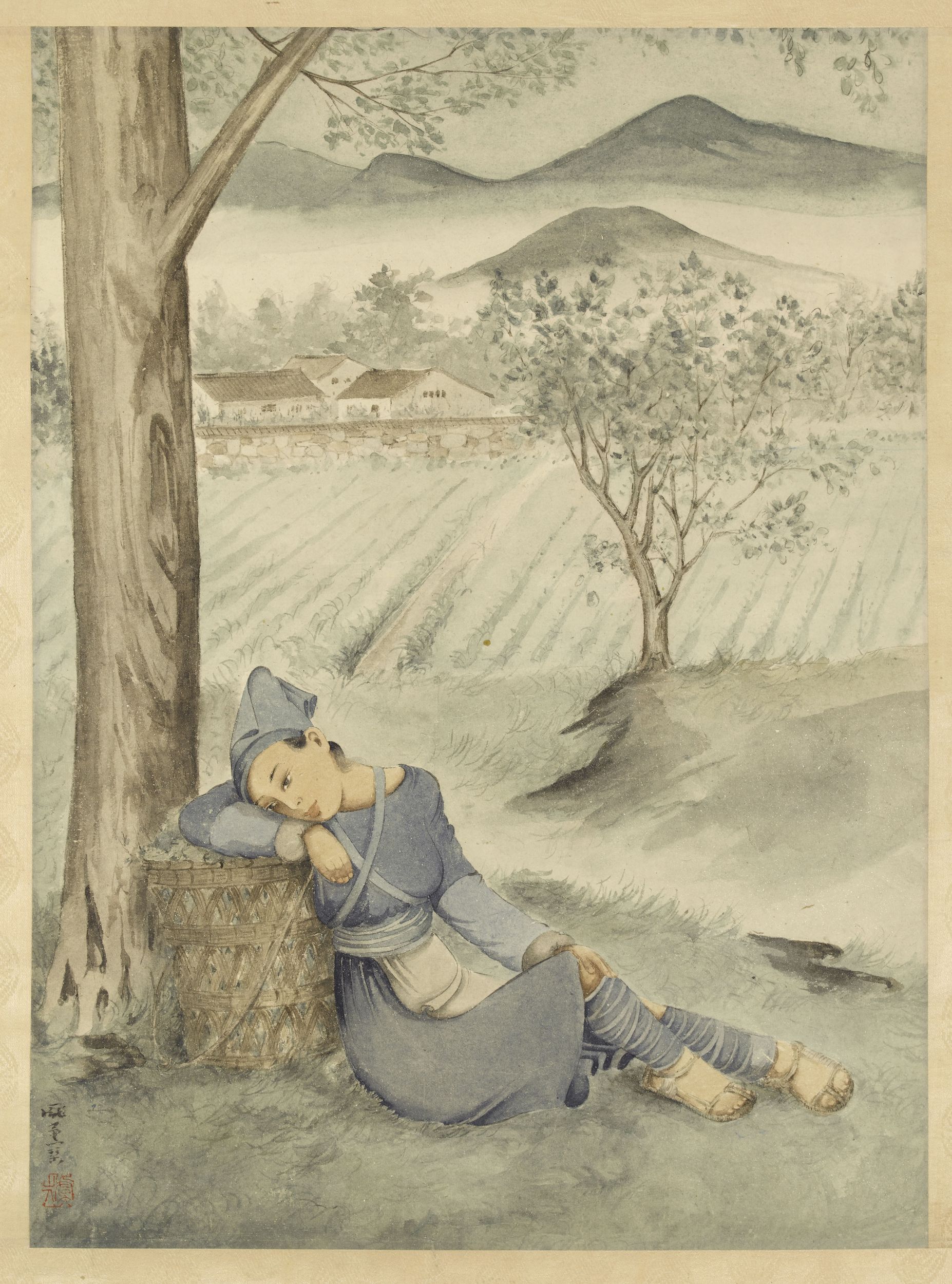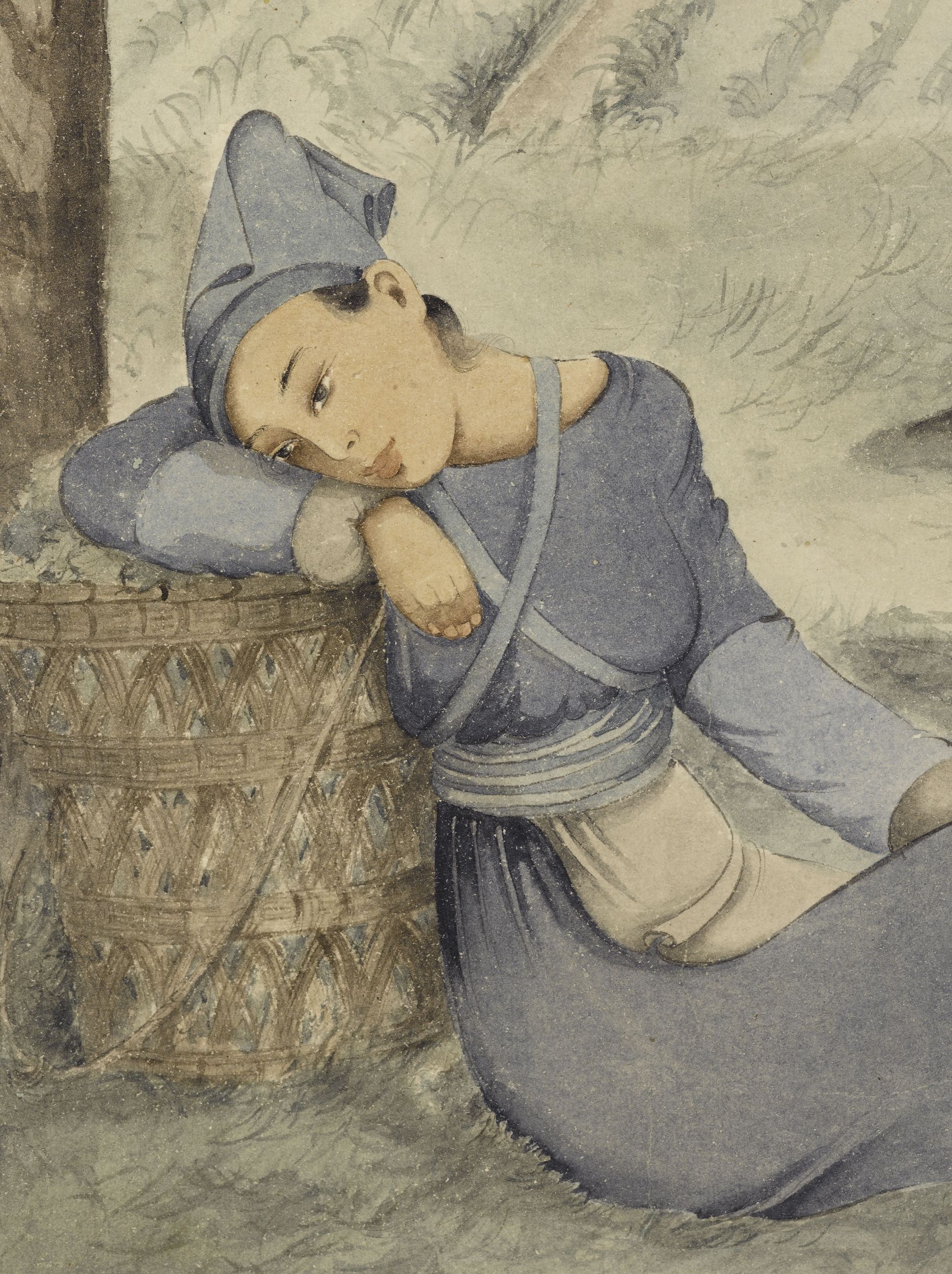
Jeune Fille sous un arbre
Peinture
Signé "Pang Xunqin"
Don manuel : Guo, Youshou 郭有守, Docteur
M.C. 8677
Signature: 龎薰琴
Painter’s seal: 虞山人 (朱文)
Translation: Pang Xunqin. In the late 1930s, Pang Xunqin’s work developed in a radical way. His departure to the western provinces of China, following the onset of war, changed his artistic approach. The painter of urban, cosmopolitan life, who produced the diptych Ainsi Paris, Ainsi Shanghai, [Like Paris, Like Shanghai] now found himself in rural surrounds. He had been sent on a mission to study the textiles of non-Chinese ethnic groups, and the interest he took in the life of these people is reflected in his paintings. While these works are characterised by their precise description of the costumes and the textile motifs, they are more than ethnographic documents. Certain works, such as the Cernuschi Museum’s Mother and Daughter, evoke family and community life. But most of their subjects are isolated female models. In these compositions, sometimes tinged with romanticism, such as The Letter in the Khoan and Michael Sullivan Collection and Girl Under a Tree in the Cernuschi Museum, the artist has created a sense of interiority. Beyond the description of costume and landscape, visibly that of the western provinces, the female type depicted by Pang Xunqin is very like that of his oil paintings in the early 1930s. Comparison of his oil paintings from the beginning of the decade with all of his works in ink and colour on paper reveals another aspect of his art. The formal experimentation that is manifest in the oils also underlies the works of the war years: as Pang Xunqin noted in the colophon on Tang Dancer, he has now transcended both the heritage of Chinese painting and the lessons of Western art.
